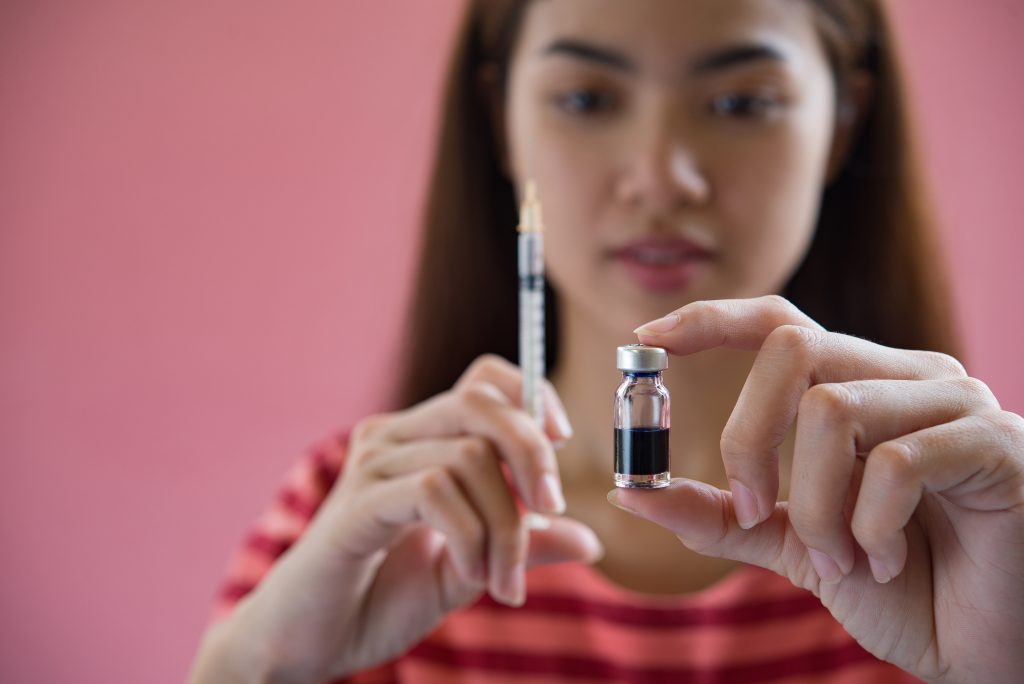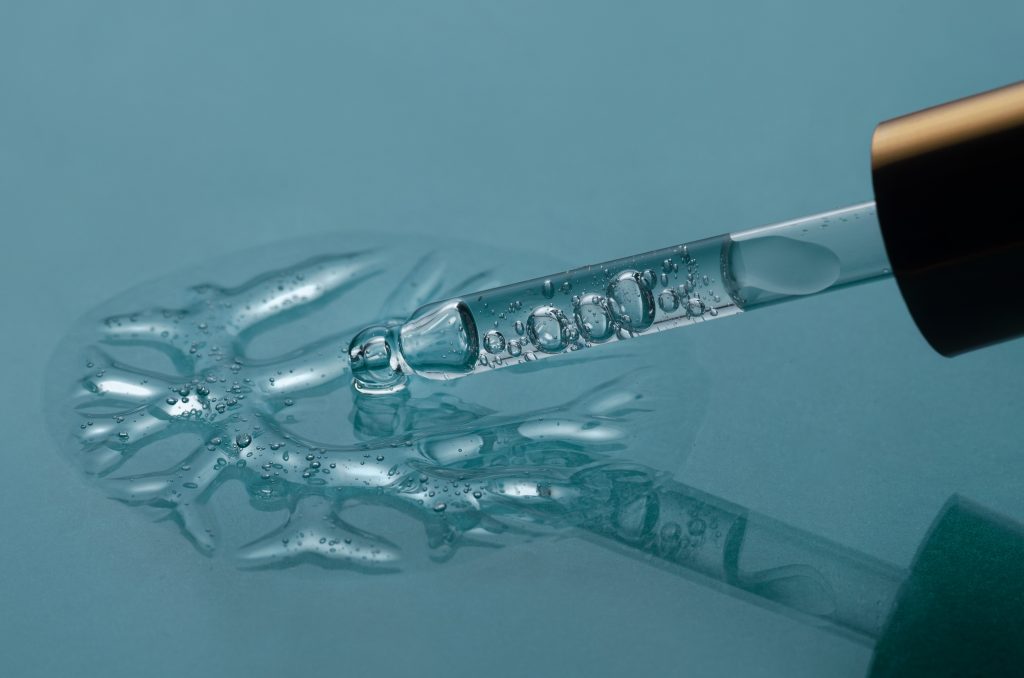Looking for a safe and secure solution for weight loss?
Peptides have now emerged as one of the most popular additional drug supplements, which a weight-losing enthusiast would never forget to take.
Originally known for their role in fitness and anti-aging, these compounds are now gaining prominence for their proven effects in reducing body fat.
But what exactly are peptides, and how do they contribute to weight loss?
If you’ve been wondering about their impact, you’re in for a treat. Keep reading, and by the end, you’ll have a clear understanding of how peptides work, their benefits, dosage, side effects and the safest ways to use them for effective weight management.
Let’s get to know it!
What are Peptides for Weight Loss?
Peptides are short chains of amino acids that make up the unit structure of proteins.
They are naturally found in the human body, and the physiological processes, such as metabolism, energy, and muscle formation, have been associated with these compounds.
For weight loss, specific compounds are derived to burn fat. They work by burning calories and increasing the body’s metabolism leading to effective loss.
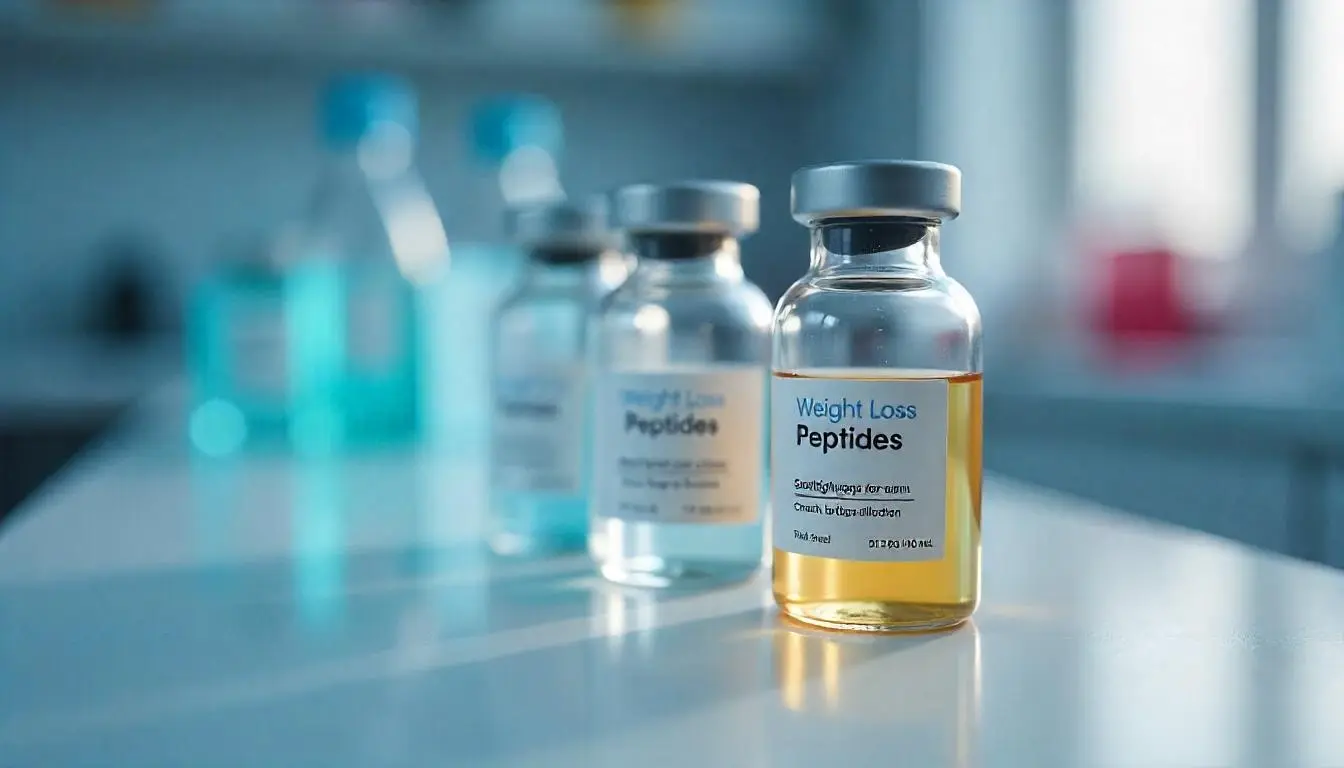
Generally, weight loss peptides are synthetic compounds that closely replicate the activities of the naturally occurring proteins in the human body.
The therapy applies these to mimic the system where these stimulate certain hormones and processes inside the body to aid in weight management.
Some examples of these are stimulation peptides that induce the production of growth hormones, leading to increased metabolic rates and the likelihood of burning fat.
How Peptides Help Burn Fat & Boost Metabolism?
Weight loss peptides work in the manner of changing metabolism and also energy balancing of the body.
They will support the stimulation of hormone production that mainly contributes to enhanced fat burning peptides, the development of muscles, as well as a decrease in cravings.
There are various modes through which peptides work:
- Stimulation of Growth
Hormone Secretion GHRPs stimulate the excretion of growth hormones.
The hormone helps in the acceleration of fat metabolism, thus causing fat loss over time.
For example, peptides like CJC-1295 and Ipamorelin enhance the release of growth hormone, which promotes fat metabolism.
Studies show that increased HGH levels can accelerate fat loss while preserving lean muscle mass.

- Increased Metabolism Rate
It increases your metabolic rate with the help of peptides.
Hence, it ensures that you have a higher calorie burn rate since it accelerates the rate at which one loses calories.
- Reduced Hunger
Other compounds have an inhibitory effect on the appetite as well as reducing cravings for foods.
It is an excellent factor that aids in losing unwanted fats because people will be in a better position to control their intake without feeling extreme hunger.
In fact, clinical studies have confirmed the effectiveness of semaglutide in suppressing appetite and supporting weight management.
Research shows that individuals using semaglutide experience a notable decrease in hunger.
- Gain of Muscle Mass
Although most of the weight loss peptides are designed to burn fats, they still stimulate some muscle building.
Caloric burn of muscular tissues is much higher than that lost by fat tissue; hence, excess increase in lean muscle mass will lead to more weight loss over time.
Typically, peptides help:
- Prevent muscle breakdown during calorie deficits, ensuring fat loss without muscle loss.
- Boost the body’s ability to build and repair muscle tissue.
- Stimulate faster muscle recovery, ultimately reducing fatigue after workouts.
Comparison of Weight Loss Peptides
Common Weight Loss Peptides and Their Advantages
| Peptide | Mechanism of Action | Brand Names | FDA Status | Clinical Findings |
| Semaglutide | GLP-1 receptor agonist | Wegovy, Ozempic | FDA-approved for weight management | 2.4 mg weekly reduced body weight by 15.3kg (14.9%) over 68 weeks, with 86.4% achieving at least 5% weight loss |
| Tirzepatide | Dual GLP-1 and GIP receptor agonist | Mounjaro, Zepbound | FDA-approved for weight loss | 15 mg weekly reduced weight by 20.9% over 72 weeks |
| Liraglutide | GLP-1 receptor agonist | Saxenda | FDA approved for weight loss | 3.0 mg: 6.0% (6.4 kg) weight loss; 1.8 mg: 4.7% (5.0 kg); Placebo: 2.0% (2.2 kg) over 56 weeks. |
| CJC-1295 | Growth hormone-releasing hormone (GHRH) analog | Not FDA-approved for weight loss/used off label | Boosts GH levels by 200–1000% for up to 6 days | |
| Ipamorelin | Growth hormone secretagogue | Not FDA-approved for weight loss/used off label | Effective for fat loss and muscle preservation | |
| AOD-9604 | HGH fragment 177–191 | AOD-9604 | Not FDA-approved/used off label | stimulate lipolysis in preclinical studies, but more human trials are needed. |
| BPC-157 | Tissue-repair peptide | Not FDA-approved/used off label | Supports weight loss indirectly through enhanced recovery | |
| Tesamorelin | Growth hormone-releasing factor analog | Egrifta | FDA-approved for reducing visceral fat in HIV patients | Proven to reduce abdominal fat in clinical studies |
| Sermorelin | Growth hormone-releasing hormone (GHRH) analog | Not FDA-approved for weight loss/used off label | Used for steady, long-term weight loss and anti-aging |
GLP-1 Peptides: Best for Appetite Control & Fat Reduction
1. Semaglutide
Semaglutide is a GLP-1 receptor agonist that mimics the body’s natural glucagon-like peptide-1 (GLP-1) hormone. 86% of participants lost at least 5% of their body weight, demonstrating its effectiveness in long-term weight management. It helps:
- Suppresses appetite, leading to lower food intake
- Slows gastric emptying, making you feel full longer
- Reduces blood sugar spikes
- Supports long-term weight loss
- Reduce cravings for high-calorie foods, promoting healthier eating habits
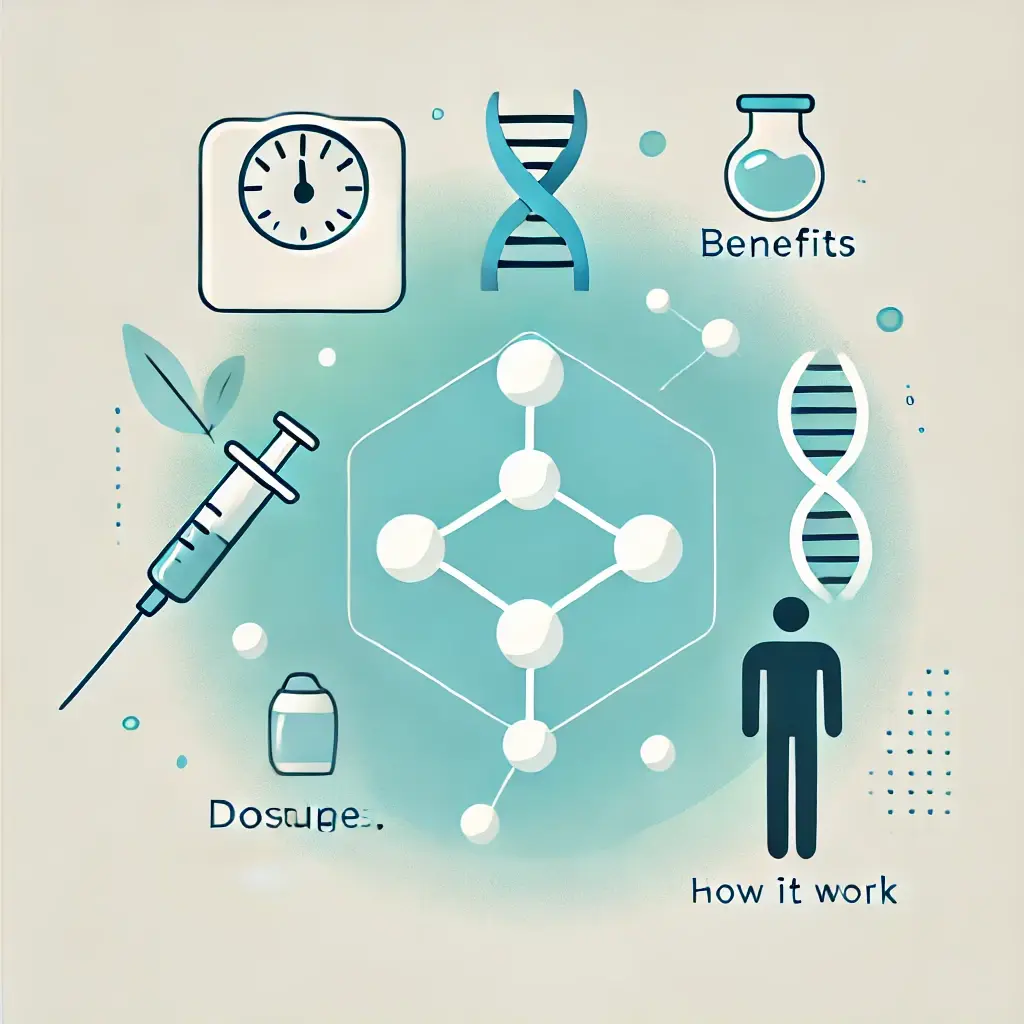
Typical Dosage: Start with 0.25 mg per week (for the first 4 weeks) to reduce gastrointestinal side effects. Rise gradually over several weeks until reaching the maintenance dose of 2.4 mg per week.
Administration: Subcutaneous injection
Side Effects
- Nausea
- Diarrhea
- Constipation
- Mild dizziness
2. Tirzepatide
Tirzepatide is a powerful dual GLP-1 and GIP receptor agonist, meaning it not only enhances insulin secretion but also amplifies the body’s ability to regulate appetite and metabolism.
It is one of the most effective peptides for weight loss, showing superior results in clinical trials compared to other weight-loss medications.
- Enhances insulin sensitivity, improving glucose metabolism
- Suppresses appetite and reduces food cravings, aiding in lower calorie intake
- Slows gastric emptying, prolonging satiety and reducing overeating
- Promotes significant weight loss, even in individuals with obesity-related conditions
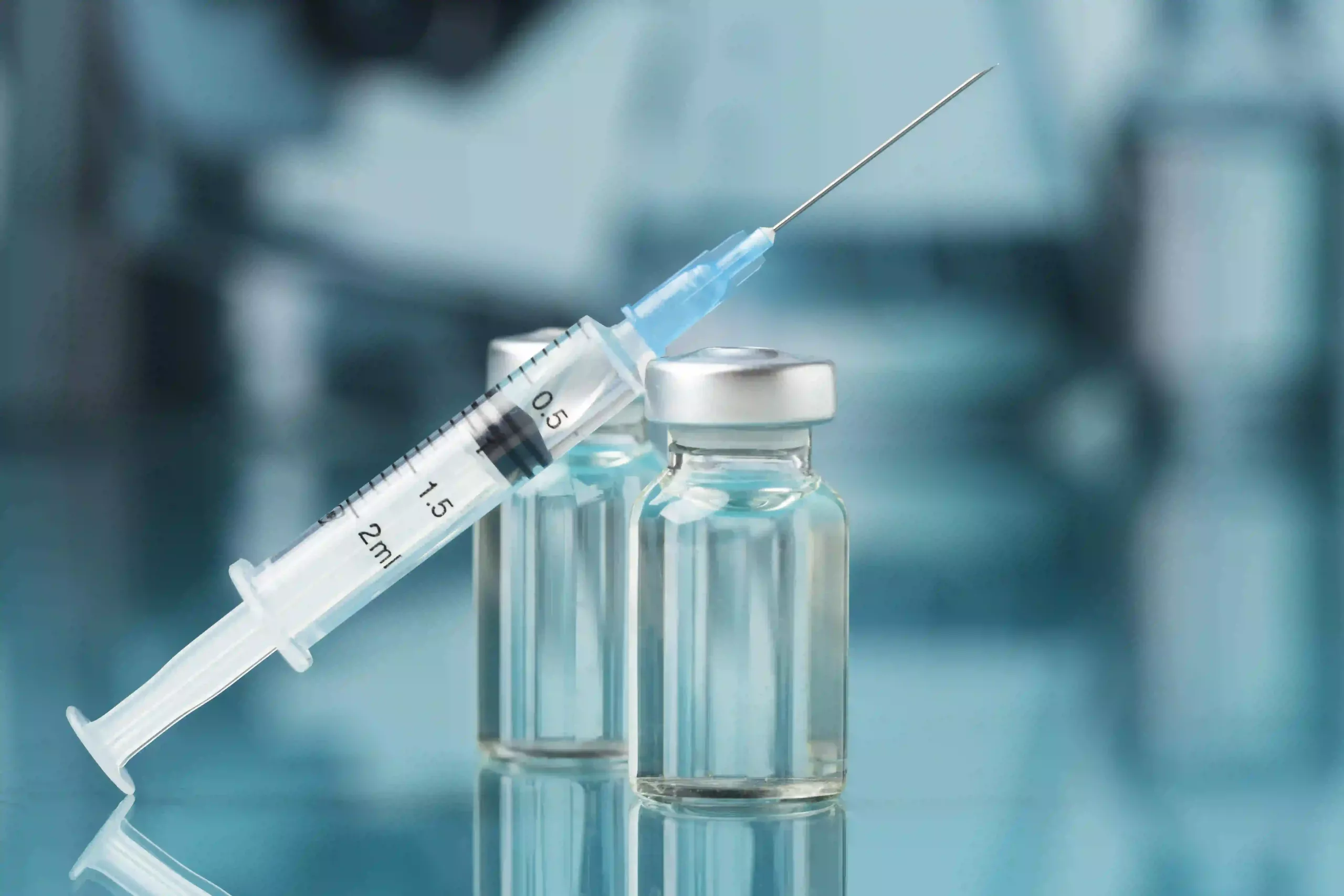
Typical Dosage: Start with 2.5 mg once weekly, gradually 5–15 mg depending on patient response and tolerance
Administration: Subcutaneous injection, typically in the abdomen, thigh, or upper arm
Side Effects
- Nausea and vomiting
- Fatigue and mild dizziness
- Gastrointestinal issues
- Possible hypoglycemia when combined with other diabetes medications
- Injection site reactions, redness or irritation
3. Liraglutide
Liraglutide is a GLP-1 receptor agonist, similar to Semaglutide but administered daily instead of weekly.
It works by mimicking the body’s natural GLP-1 hormone to regulate appetite, digestion, and blood sugar levels, making it a valuable tool for gradual and sustainable weight loss.
Its main functions include:
- Reduces appetite and cravings by suppressing hunger signals
- Enhances satiety and digestion by slowing gastric emptying
- Regulates blood sugar levels to promote sustained fat loss
Typical Dosage: Start with 0.6 mg per day to 3.0 mg once daily for weight management
Administration: Subcutaneous injection, usually in the abdomen, thigh, or upper arm
Side Effects
- Nausea and digestive discomfort, particularly in the early stages
- Increased heart rate, especially with higher doses
- Mild headaches and dizziness
- Possible fatigue or low energy levels
- Rare risk of pancreatitis (inflammation of the pancreas)
Now let’s see what experts have to say about this.
So, as per Dr. Mantzoros, GLP-1 receptor agonists, like liraglutide help regulate appetite by altering brain activity linked to food cravings while also influencing key metabolic processes. This makes them a promising medical intervention for individuals looking to achieve sustainable weight loss under professional guidance.
Growth Hormone Peptides: Best for Fat Metabolism & Muscle Retention
1. CJC-1295
This has been proven to induce the release of growth hormone.
Based on this, it is widely used by most bodybuilders since it enables the gain in both muscular strength and overall loss in body fat.
On the paper, studies show that CJC-1295 increases growth hormone levels by 200-1000% for up to 6 days after administration.
This helps:
- Increases growth hormone production
- Enhances metabolism and fat burning
- Supports muscle recovery and development
- Improves sleep quality

Typical Dosage: Take 300–600 mcg per week and split into 2-3 doses. Ideally taken before bedtime or post-workout to maximize GH release.
Administration: Subcutaneous injection
Side Effects
- Mild water retention
- Temporary numbness in extremities
- Possible fatigue or flu-like symptoms
2. Ipamorelin
This is mostly combined with CJC-1295. It also stimulates the secretion of growth hormone without increasing cortisol or ghrelin levels.
This makes it an effective option for fat loss, muscle preservation, and overall body composition improvement.
It is used to
- Stimulate growth hormone production
- Promote fat loss without increasing hunger
- Support muscle growth
Typical Dosage: Take 100 mcg per day and gradually increase to 200–300 mcg.
Administration: Subcutaneous injection, generally in the abdomen or thigh
Side Effects
- Mild headaches
- Temporary nausea
- Possible irritation or redness at the injection area
- Water retention
- Drowsiness or fatigue
3. Tesamorelin
Tesamorelin is a synthetic growth hormone-releasing factor (GHRF) analog that stimulates natural growth hormone production. It is particularly useful in
- Reducing hard-to-lose visceral fat around the abdomen
- Supporting muscle preservation while reducing fat
- Enhancing cognitive function in some users
Typical Dosage: 2 mg once daily
Administration: Subcutaneous injection, usually in the abdomen
Side Effects
- Mild redness or irritation at the injection site
- Increased hunger in some individuals
- Temporary joint pain or stiffness
- Rare cases of swelling or tingling in extremities
4. Sermorelin
Sermorelin is a growth hormone-releasing hormone (GHRH) analog that stimulates the pituitary gland to naturally increase human growth hormone (HGH) production. It aids in fat loss, muscle preservation, and metabolism improvement.
Typical Dosage: 200–500 mcg per day, usually before bed
Administration: Subcutaneous injection
Side Effects
- Mild flushing or dizziness post-injection
- Temporary irritation at the injection site
- Increased appetite in some individuals
Peptides That Indirectly Support Weight Loss
1. AOD-9604
The more it is designed for weight loss. Although its intent is not directly fat breakdown, it is one of the most potent peptide compounds for fat loss and has been shown to potentially burn belly fat. What makes this hormone good is that it
- Stimulates fat breakdown (lipolysis) to aid in weight loss
- Prevents the formation of new fat cells (lipogenesis)
- Does not interfere with blood sugar levels or increase appetite
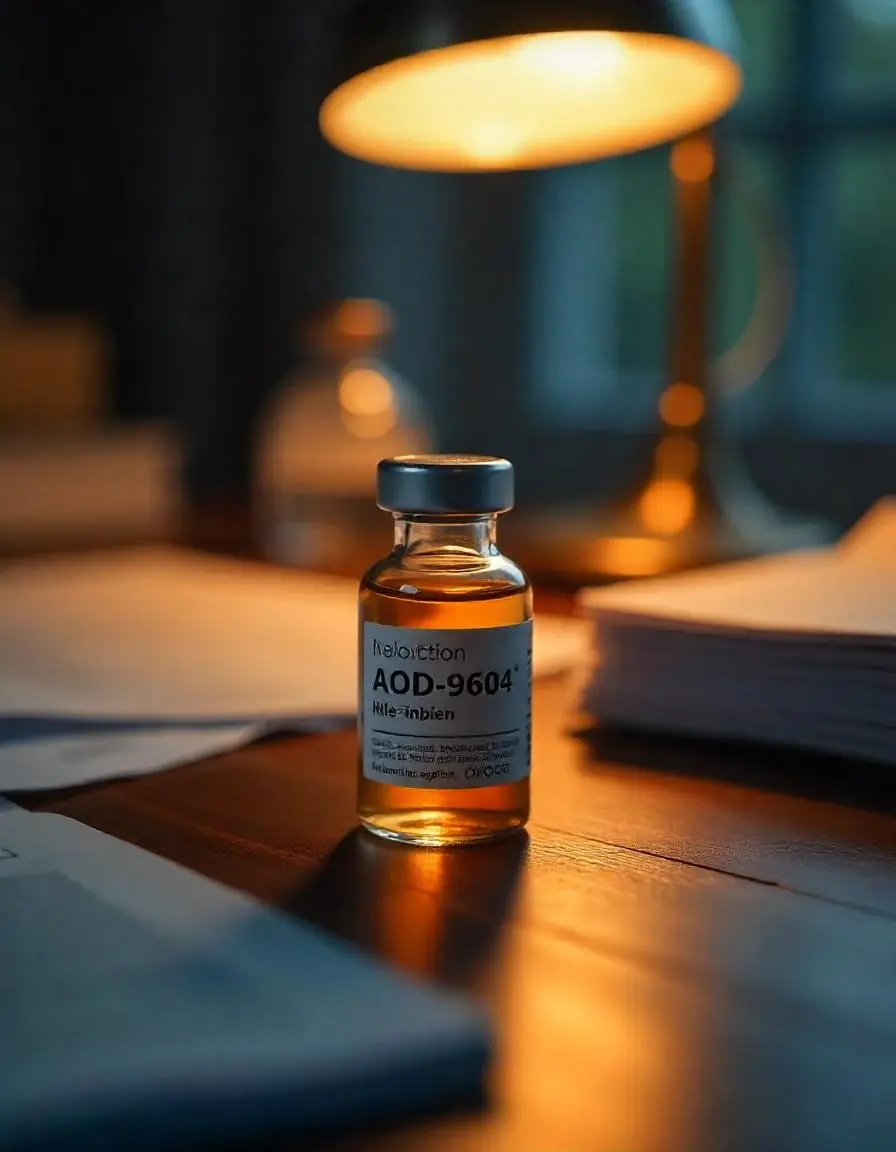
Typical Dosage: Start with 250 mcg to 500 mcg per day for consistent effects
Administration: Subcutaneous injection, preferably in the morning or before workouts
Side Effects
- Generally well-tolerated with minimal adverse effects
- Occasional mild headaches or dizziness reported in some users
2. BPC-157
Whereas BPC-157 is hardly new to the news for healing properties, it would be a significant help in weight reduction if faster recovery and less inflammation can be afforded.
It will greatly benefit active individuals or those on a weight-reduction track.
Typical dosage: 200–300 mcg per day, depending on the severity of inflammation or injury
Administration: Subcutaneous injection (preferred for systemic effects) or oral capsules (for gut health)
Side Effects
- Minimal reported side effects, making it well-tolerated
- Occasional mild nausea in some users

How to Take Peptides with Weight Loss
Our Providers will go over how to administer and how much to take of all peptides.
- Take Care of Dosage
Each peptide has its specific dosage tailored to suit one’s needs, body structure, and weight loss intent. Consult a therapy clinic or a licensed individual for the correct dosage.
- Choose the Right Injection Site
Primarily injected into a subcutaneous layer – under the skin sites containing a layer of adipose tissue, such as the abdominal area. This will bring forth optimal absorption and effectiveness. Self-injections are common when it comes to peptides on weight loss; however, it is best to get coached by a healthcare provider.
- Follow the Recommended Injection Frequency
Depending on the type, the numbers of injections vary. Most inject once a day, while others require more than one injection and as many as two to three times a day. Peptides need to be followed strictly.
many as two to three times a day. Peptides need to be followed strictly.
Is Peptide Injection Safe?
Probably the most asked question people seeking information on therapy ask is if it is safe or not.
The answer is: Peptide therapy is safe, provided one administers it under proper guidance from a qualified professional. However, knowing the side effects is also important. Some of the minor common side effects are redness and swelling at the injection site, headaches, or nausea. Of course, adverse effects can appear less frequently and are severe, therefore it is recommended to be discussed with your healthcare provider before the start of the peptide treatment.
Another asked question is, Are these injections dangerous? Although relatively safe when administered under a doctor’s supervision, they do present some potential risks if given or their dosages are incorrectly administered. Any qualified professional trained to work with these therapies will minimize your risks and ensure your treatment will be both safe and effective.

Which peptide is Best for Weight Loss?
Of course, when picking the best peptides for weight loss, the purposes served by different compounds vary, so you want to pick one that would fit your goals for losing weight. Here’s how each of these stands apart and what they have to offer:
- Tesamorelin – Targets stubborn abdominal fat, especially visceral fat. Works best with exercise and a balanced diet.
- Sermorelin – Boosts metabolism and preserves muscle while supporting steady fat loss.
- AOD-9604 – Specifically designed for fat burning, especially in the belly area, without increasing hunger.
- Semaglutide & Tirzepatide – Suppress appetite, slow digestion, and support significant long-term weight loss.
- CJC-1295 & Ipamorelin – Increase growth hormone levels to enhance fat metabolism and muscle recovery.
BPC-157 – Helps with recovery and reduces inflammation, making weight loss efforts more sustainable.
Measurement Of Results: Before and After Peptide Therapy
This may differ in terms of time before you can actually see the effect of the therapy, and generally, this will differ from one person to another because the result of therapy for weight loss is also different from person to person. Here is what you may expect in terms of timeline and results:
First Month:
The first couple of weeks tend to translate into an increase in energy levels, along with a mild decrease in appetite levels. During this phase, one might not notice too many reductions in pounds; however, it’s an easy period in which to feel a new level of motivation and boost the metabolism.

Three to Six Months:
This is the time when most users who have not experienced enlightenment through self-enlightenment, most of whom noticed significant changes in the body and what it is composed of, provided that the user maintains consistency in his or her exercise routine and diet, the lean muscle mass increases and fat loss would be much visible, especially in areas that have been previously known to be stubborn, such as the abdomen.
After Six Months:
Here, most of the users can feel significant long-term weight loss, higher muscle mass, and improved body composition.
The longer, the more dramatic the before-and-after photographs taken would be in telling progress because it probably has been minor but very significant.
Future of Weight Loss through Peptides
Peptide therapy and its application in weight loss are new avenues. It is through specific metabolic pathways that it leads to loss of fat and the growth of muscle.
In a word, beyond successful weight loss, these compounds improve health in general, increase energy levels in general, and sometimes may help with recovery.
Thus, further research into therapies will only broaden the list of such treatments, all finely tuned and adjusted to the needs of an individual in managing his weight and general well-being.
First of all, if you are looking at therapy as a means of weight loss, first visit a licensed peptide therapy clinic.
A good team can guide you on the best peptides to meet your needs and ensure they are used safely and effectively.
If you are right, then they will be a very important adjunct in the journey to achieving and, above all, maintaining that leaner, healthier body.
Conclusion
Peptides have become a breakthrough in the science of weight loss, offering a more targeted and effective approach to fat reduction.
By working in sync with the body’s natural physiological processes, they help accelerate metabolism, curb cravings, and promote lean muscle retention.
At Divine Health, we understand that true transformation goes beyond just shedding pounds.
Our expert-guided peptide therapy is designed to help you achieve sustainable weight loss while prioritizing your overall well-being and vitality.
With the right peptide, proper dosing, and professional oversight, you can experience a healthier, more energized version of yourself.
Let us help you take control of your wellness journey safely and effectively.
Frequently Asked Questions About Peptide Weight Loss Injections
Are Peptide Injections dangerous?
As injections are relatively safe when done properly, there are some mild side effects to keep alert for. Typical peptides side effects may include some redness or irritation at the injection site, mild headache, or slight nausea. The extreme side effects happen to be rare and would only be expected in cases of overuse or improper use of proteins. Always follow professional guidance for the safest results.
Is Peptide Therapy Safe?
Of course, weight loss therapy benefits are massive. It is safe if carried out under the care of a healthcare provider. Licensed professionals will administer the correct dose to you while keeping a close eye on the manifestation of side effects.
Where can I get peptides?
Weight loss may be sourced from therapy clinics like Divine Health. Still, for a person to be assured of getting quality and safety, they should obtain the same from legitimate medical clinics or pharmacies. At times, products sold by unknown online vendors do not have purity and potency levels established.
How long do peptides take to work?
The outcomes differ based on the peptide and personal aspects such as metabolism and lifestyle. GLP-1 peptides (such as Semaglutide, Tirzepatide) can exhibit significant weight reduction in 4–8 weeks, whereas growth hormone peptides (such as CJC-1295, Ipamorelin) take 8–12 weeks to have noticeable fat reduction and muscle adjustments. Proper dosing and consistency are the secrets.
Are peptides safe for all?
No, peptides are not for all. They need to be administered under medical care, particularly in patients with existing medical conditions such as heart disease, diabetes, or hormonal imbalances. FDA-approved peptides such as Semaglutide and Tirzepatide have undergone safety studies, whereas others, such as CJC-1295 and BPC-157, are utilized off-label and need close observation.




